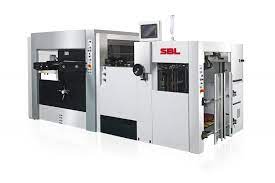Die-cutting machinery, at its core, is about precision and versatility. Capable of handling materials from paper and plastic to metal and fabric, it supports a broad spectrum of applications, from packaging and labels to automotive parts and textile patterns. The essence of its innovation lies in its ability to produce complex shapes with clean edges and consistent quality at high speeds, a feat that manual processes cannot match.
A Synergy of Tradition and Technology
While die-cutting is a technique rooted in historical manufacturing processes, modern advancements have elevated it to new heights. The integration of digital technology, such as computer-aided design (CAD) and computer numerical control (CNC), has transformed die-cutting machines into highly adaptable and efficient systems. These advancements allow for rapid prototyping, custom designs, and short production runs, providing manufacturers with the agility to respond to market demands and customization requests.
The Role of Automation and AI
Automation has significantly enhanced the capabilities of die-cutting machinery, reducing labor costs and increasing production rates. Today’s die-cutting systems are often equipped with robotic arms and automated feeding mechanisms that streamline the production process. Furthermore, the advent of artificial intelligence (AI) in die-cutting machinery has introduced predictive maintenance and optimization algorithms, ensuring machines operate at peak efficiency and reducing downtime.
Sustainability and Material Innovation
As global emphasis on sustainability grows, die-cutting machinery is adapting to meet eco-friendly standards. Innovations in material science have led to the development of biodegradable and recycled materials suitable for die-cutting, aligning product design with environmental stewardship. Additionally, advances in machine efficiency contribute to reduced energy consumption and waste production, further cementing the role of die-cutting machinery in sustainable manufacturing practices.
Envisioning the Future: The Horizon of Die-Cutting Technology
The future of die-cutting machinery lies in its continued integration with emerging technologies. The potential for augmented reality (AR) and virtual reality (VR) to enhance machine setup and maintenance presents exciting possibilities, offering intuitive and immersive interfaces for operators. Moreover, the ongoing evolution of materials and the increasing precision of die-cutting machinery promise to unlock new applications, from wearable technology to advanced medical devices, pushing the boundaries of what can be designed and produced.

